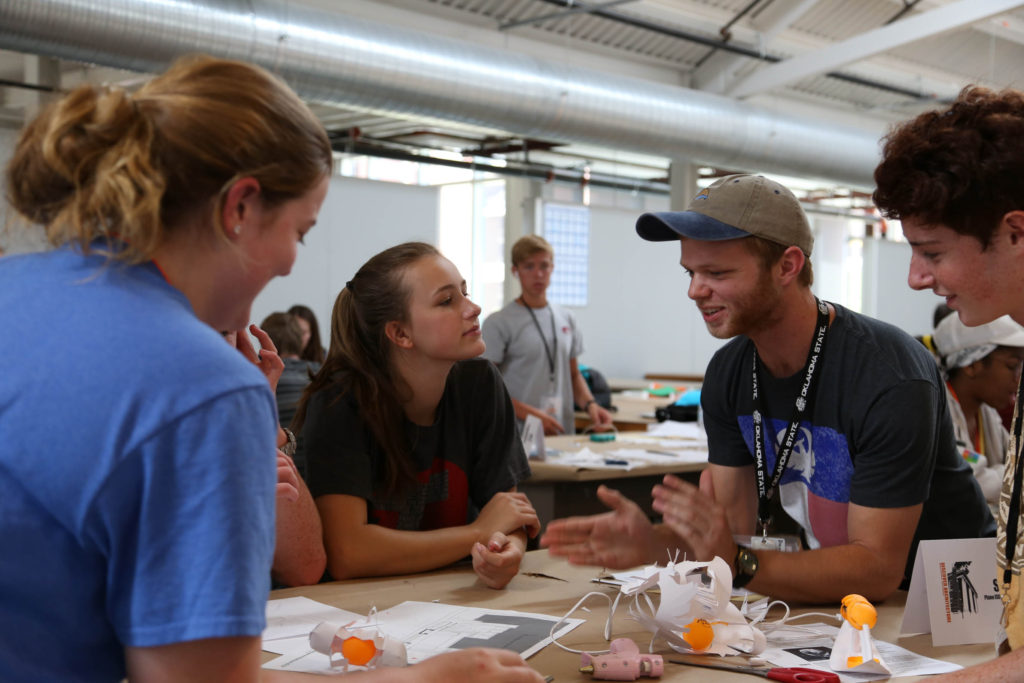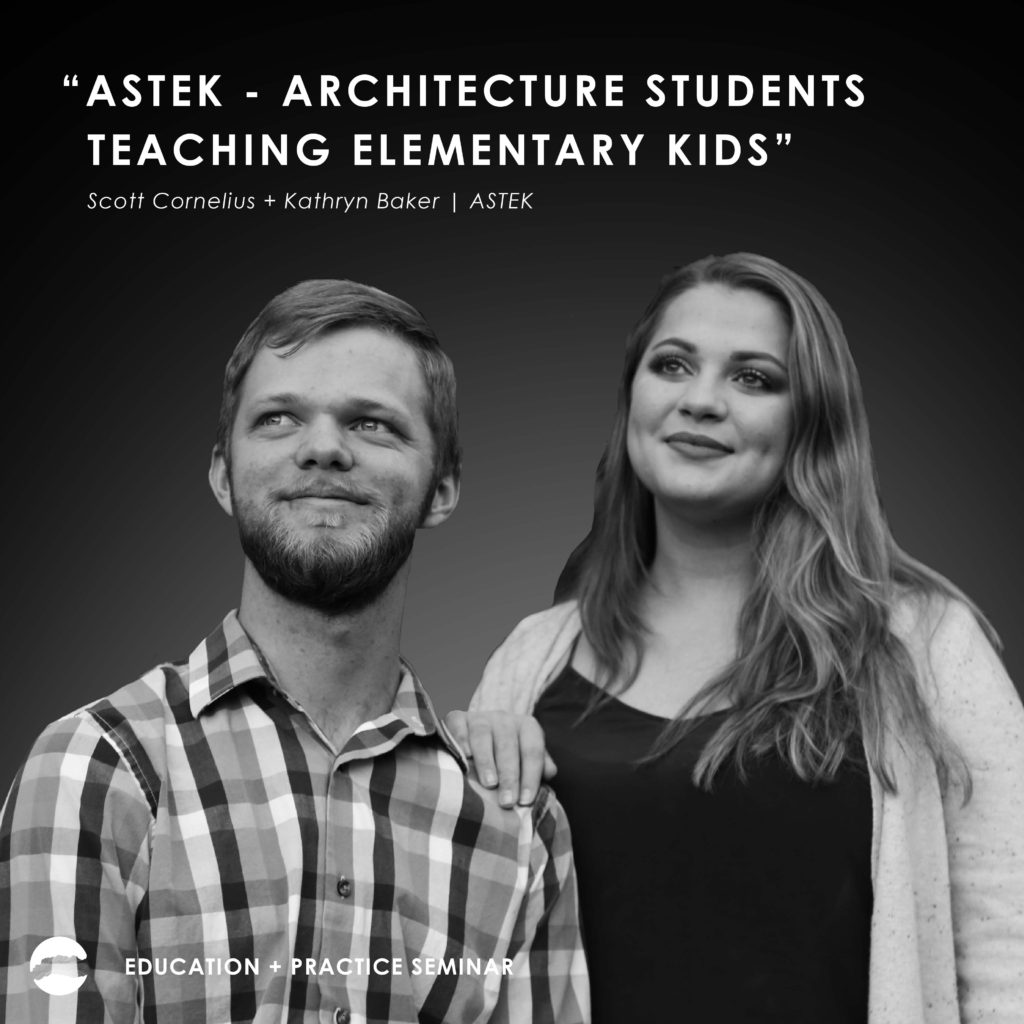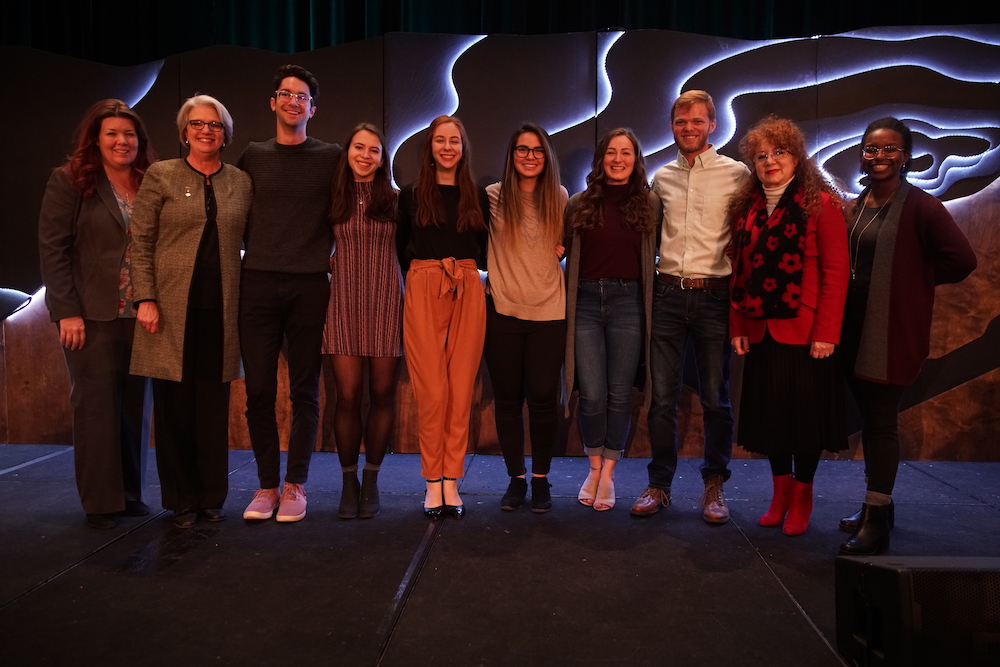NXT GEN: Scott Cornelius
Words: Bronzella Cleveland
Photos: Scott Cornelius
Editor’s Note: In the first NXT GEN interview of the year for MASONRY DESIGN, we sat down with AIAS President Scott Cornelius. He is an alum of Oklahoma State University where he received a Bachelor of Architecture. Learn more about Scott and his plans for the future. We’d like to thank Scott for taking the time to talk with us.
MASONRY DESIGN Magazine: Can you tell me a little bit about yourself?
Scott Cornelius: I'm Scott Cornelius. I am 24 years old. I'm from Canyon, Texas, originally, which is a little town just south of Amarillo, Texas. I went to school at Oklahoma State University (OSU) in Stillwater, Oklahoma. I received my Bachelor of Architecture there. I'm currently working for the American Institute of Architecture Students (AIAS) in Washington, DC. My term as president ends in July, and after that, I'll be moving into an architecture firm.
M.D.M.: So what made you interested in designing architecture?
S.C.: Originally, I was extremely interested in engineering. About a week before classes began, my freshman year, I took a tour of the architecture building—kind of just as a part of this program I was in. One of the professors convinced me to try architecture, just as a better balance between technology and art. I also had a lot of interest in sociology, and my interest in engineering didn't touch [the] kind of people or psychology as much as I would like. So I tried architecture and an intro class and found it was just a better balance of all of those things, and I switched over.

M.D.M.: Were you involved in any other associations or clubs while in college?
S.C.: So, obviously, AIAS was a big thing that I did in college. I started as their social chair. So I guess the thing that first drew me to it was the community created in the school of architecture. It brings people together for many different events and meetings and things that were going on. So I wanted to be a part of that. That's why I became social chair, and then, having done that, I was able to get a lens into/on a national and regional level AIAS—their advocacy efforts and what they were pushing for in architectural education. It wasn’t just parties but advocating about sustainability and diversity in architecture, and all these things. So I became very involved in that and eventually moved up into the national organization.
There were a few other organizations I was involved with in college. I was involved in CSI: the Construction Specifications Institute, which is a more multidisciplinary architecture, engineering, construction, industry-focused organization. A lot of it's about technology. So I was really interested in that just as a way to, like, expand my world outside of just architects. So that was wonderful. Then there was just another smaller organization that was just at OSU specifically called Aztec—a group of architecture students teaching elementary kids. So we had our architecture students go out into schools in the Stillwater community and taught fifth graders about architecture week to week. That was really fun and a good way to get involved with younger kids and get them interested in architecture and the built environment.
M.D.M: Can tell me about your course load?
S.C.: I have a Bachelor of Architecture. So mine was a five-year, professional, undergrad degree, I took over the course of five years. I took eight different studios. So it was a pretty heavy course load as it is for architecture students. Typically, I was in between 16–18 hours a semester. I also had a few different jobs at the university. So maintaining that work-life-school balance could be difficult times but made life interesting, for sure, in terms of projects I worked on in school. In Oklahoma, we are close to a lot of different Native American nations. So I worked on a cultural center for the Pawnee Nation. That was really interesting. That, again, speaks to my sociology interests. I got to visit the tribe and go to some of the events and learn about their culture and mix that into that design. So that's really fun.

Then there were cultural things. We had a competition called the Tactical Urbanism Competition, and my group was studying the largest slum in Mumbai, which is called Dharavi. We talked about how to get water more readily available. Dharavi is a resource and also creates community around that water source. So we had a really interesting project. It was an outdoor bamboo construction, and it was kind of a departure from traditional architecture. That was really great. The things that aren't really architecture were involved in that degree as well. So, I think this is after COVID began. We did a competition that's called the Urban Chair competition. It was about creating outdoor furniture for public spaces in urban contexts with a spin, obviously, of making that furniture desirable during a pandemic. My group's project focused on how to create a kind of pod that was an outdoor furniture model but protected you and made you feel like you were having an individual experience. We also use mycelium, which is mushroom fibers to create that. So it's like a living thing. It was very sustainable and could be deconstructed and reconstructed as needed. So that was really fun.
Generally, my workload in college kind of varied all over the place in terms of what is architecture and what is not architecture, but it was a great time. My favorite classes were the ones where I learned about the cultures of different people in different nations and got into that in order to understand what you could design for them. That's a really big part of the architecture. One of my favorite classes, that's a bit of a departure from what you typically see in architecture school, was a seminar called Legend of the Town Center. It focused on the design of small towns in Oklahoma, specifically, the urban planners and things like that.
It isn’t something you don't really look at in small towns as things that have been planned or things that have any sort of rhyme or reason to them. So studying that, and how these towns were organically created based on the people's culture and what they were focused on, seeing how they formed these town centers as, you know, cultural centers and governance centers, was really interesting. Translating that into a larger urban context, I think is really useful for urban planning. So that was great, and then what I emphasized again, I've been talking a lot about sociology. My minor was in architectural history and theory. So again, a lot of cultural things and getting into why architecture is the way it is today and what we can do to make it better.
M.D.M.: So can you tell me a little bit about your role now?
S.C.: I'm the national president of AIAS. This position is a little weird in terms of how organizations work. So at a typical organization, like, taking the AIAS’s national president, for example, they continue working as an architect, but they're, kind of like, working on the side as the president of the organization. So it's not a full-time gig. It's just kind of something they're volunteering their time for. So with AIAS, it's different because AIAS officers are people who have just graduated or are about to graduate from college as architecture students. So we actually work full-time.
I moved from Oklahoma in May to Washington, DC, and have been working full time in downtown DC. The office is actually located in the AIA’s national headquarters. I've kind of balanced these two roles as the chair of the board and the chair of our Council of Presidents and the person that's the touchstone of the strategic direction of the AIAS, what we're trying to accomplish, what our mission is. I also serve as a staff member.

So getting into a lot of administrative things, managing our website, making sure that our members have students to talk to and deal with, in terms of the issues they're having the things they want to accomplish. It's been really fun. On a day-to-day basis, I'm typically doing a lot of communication with students and with chapters and chapter leaders, and also with allied organizations. At the moment, there are six big allied organizations that are architecture: that's the AIA (American Institute of Architecture), NCARB (National Council of Architectural Registration Boards), ACSA (Association of California School Administrators), which is an organization for architecture faculty; the NAAB (National Architectural Accrediting Board), which accredits schools of architecture; Noma (National Organization of Minority Architects), which is minority architects; and then AIAS, which represents the students. So we all come together quite often to talk about architecture issues. I'm always in contact with those other organizations. They're a lot of advocacy efforts that are wrapped up in the officer roles, especially the president’s role.
So in March, for example, is what we call advocacy month for the IRS, and we focus on the work of our committees and what they're trying to accomplish within the world of architecture. Committees are another thing that the president of the AIAS manages, all of our committees. So, we have a few standing committees like Governance and Finance and things that happen every year. Then we have special committees that the president comes up with and assigns members to that focus on the strategic directions of the AIAS. So this year, for example, we have a diversity committee, and we have the Technology and Sustainability Task Force and an Educational Culture Task Force . . . so, trying to coordinate all their efforts to make different things happen. Then, there are smaller things, of course. I manage our website, managing emails, planning, conference, finances, and different programming we have going on. So there are a lot of different tasks to be done. It's a whirlwind in a year, but it's really fun and interesting.
M.D.M.: So where do you see yourself in five years?
S.C.: Oh, great question. So my current plan, once my term as AIAS President ends in July. I'll actually serve as past president for a year. But that's not a full-time position. So I'll go to an architecture firm. I plan to work in a firm for about three or four years, depending on how long it takes me to get all my hours and finish my licensure exams. I want to become licensed pretty soon. Then, when I get my license and have saved some money, I'm actually going to go back to grad school, probably to get a degree that's related to urban planning, that kind of thing. In five years, I'll probably be back in school, which is wild to think about, and then post my graduate degree. I want to actually teach eventually, so I'm going to be looking for universities to teach at and get involved with, so that'll be the plan for now.
M.D.M.: Have you had any internships in the architectural world?
S.C.: I've had four different summer internships at three different architecture firms. So I was really lucky. After my freshman year, I interned at a firm in Amarillo, Texas, mostly because my dad is a building official in my hometown. So I worked for them for a couple of years as an intern. It was a really good experience. In the last couple of years in college, I worked in Oklahoma City at two different firms. And those were wonderful as well. By that time, obviously, I actually had the skills needed to help with projects and architecture firms. So I was able to do more things and visit the sites and do all that kind of stuff. So, I’ve had a few different internships, and they were all very different experiences, especially in terms of the culture of the different firms. But they all helped me along my way and helped me decide kind of what my focus is and what I wanted to do.
M.D.M.: Have you faced any challenges thus far?
S.C.: Yes, I definitely face lots of challenges all the time. They vary. There are challenges within the field of architecture, in general. Architecture has a lot of issues with mental health, not a lot of architects have good mental health practices—a lot of them are just like workaholics. That's the culture that has been constructed and the industry of architecture. So a lot of that . . . a lot of what we're doing, is actually advocating against that and trying to break down that preconceived notion of how you have to be as an architect. But just going through school with that culture around you is really difficult. So that is probably a hurdle that a lot of people would mention, talking about challenges in architecture.
But in my 10 years, specifically, there's, for sure, been challenges—especially in terms of COVID-19. So before COVID-19, the AIAS was really different than how it looks today, and we had regional and national conferences that everybody got to travel to meet each other and be together. Then officers, who again, work in the national office, got to travel pretty regularly to our different chapters around the nation. Sometimes around the world, we have international chapters as well. So obviously, we don't get to do a lot of travel these days—both because of COVID-19 and because of the financial implications of just all that travel in terms of where we're at financially right now. But we are trying to plan, our Grassroots Conference, which in our summer conference is meant to be partially in person. So that'll be our first in person conference in over two years.
It's been really crazy, and it's been really hard to connect these chapters with these students virtually. We've been virtual for almost two and a half years. So there's this whole new generation of architecture students that are first and second years that don't know anything about the AIAS, don't know a lot about the culture of being an architecture student, or what that community looks like, because it's been kind of dead for a couple of years. So trying to reconstruct, has been a really big challenge for us. This is also common for a lot of organizations, especially membership-based organizations. We have lost some members that started [in] the pandemic. Because of what we were able to offer virtually, we've built up a lot of that since then, but we also lost a couple of hotel contracts for conferences that we had planned before the pandemic started. So we, the AIAS, have been on this unstable slope for a while now.
Starting this year, we create a new strategic plan, which was one of my big goals for the year. So we're starting to work on stabilizing the organization, so we can provide those resources that students need and start to fill this perceived gap in architectural education. A lot of my tenure as president has been more internally focused, and focused on what students need right now. Not so much what I expect it to be in terms of getting to travel, advocate, and do all these really cool things, but it's been nice to get down to the basics of what we can accomplish as an organization, what students need. It's definitely been a challenge to shift my mindset to what we need right now.
M.D.M.: Do you have any advice for anyone interested in going into the industry?
S.C.: Yeah, for sure. I have lots of advice. But I think my biggest piece of advice would just be to advocate for yourself, and familiarize yourself with the issues I've been talking about in terms of mental health and what's required of architects as workers, as well as not falling into this pit that so many architects fall into while doing the work your whole life, and not focusing on the cultural implications of the work, or what it means to be doing what you're doing. There’s a lot of great movement around that. That has just begun because of the pandemic and everything that's been happening for the last couple of years. But the one thing a lot of people have heard about is the unionization that shop architects.
They're in New York City, and they're forming a union to just advocate for themselves. So, make sure you have a community around you that's ready to talk about those kinds of issues. Again, not just fall into the pit of, for example, I'm a CAD monkey (or whatever it is called)—I’ll just sit here and do the work on my computer, and I don't say anything. Just be ready to advocate for yourself because architects are really plugged into their communities, their cultures, and the people that are shaping our cities.
M.D.M.: Is there anything else that you wanted to add or anything like that?
S.C.: I would like to say to all the architecture students, find a community that's ready to advocate for you and, like, give you a platform to advocate for yourself. As I've said, the AIAS is a really great option for that. But there are also a lot of other great organizations and communities out there. So just get involved with one that that speaks to you. It doesn't have to be the AIAS, but just be out there doing something.